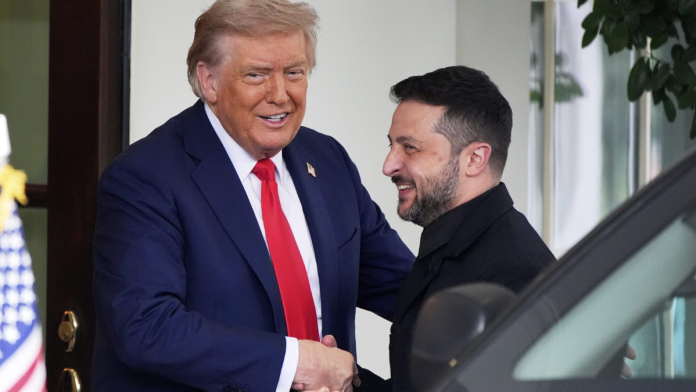In a significant move, U.S. President Donald Trump has announced plans to establish a “Ukraine Victory Fund,” aimed at bolstering Ukraine’s military efforts. The fund would be financed through a substantial 500% tariff on imports from China. This proposal is set to be discussed with European allies ahead of Ukrainian President Volodymyr Zelenskyy’s scheduled visit to Washington on Friday.
The primary objective of this initiative is to increase economic pressure on Russia by targeting its key ally, China. A significant portion of Russia’s energy exports, particularly oil, are purchased by China, which in turn supports Russia’s military activities. By imposing hefty tariffs on Chinese goods, the U.S. aims to disrupt this support and encourage Beijing to reconsider its stance.
The proposed tariffs would apply to a wide range of Chinese imports, including electronics, machinery, and consumer goods. The revenue generated from these tariffs would be redirected to support Ukraine’s defence needs, including the procurement of advanced weaponry and military equipment.
European Allies’ Response and Coordination Efforts
While the U.S. is ready to impose these huge tariffs on Chinese imports on its own, it is also trying to work with European allies to make the plan more effective. The idea is that if multiple countries act together, the economic pressure on China—and indirectly on Russia—would be much stronger. For this strategy to succeed, European countries need to agree to similar measures.
European nations, however, have always been careful in dealing with China. Many of them have strong trade and investment ties with Beijing, and they are cautious about doing anything that could harm their own economies. They try to balance their economic interests with political and security concerns, which makes decisions like these complicated.
The upcoming talks with European leaders are therefore very important. U.S. officials are stressing that a united approach would make the plan far more powerful, potentially forcing Russia to rethink its actions in Ukraine. At the same time, there is recognition that getting all European nations on the same page could be difficult. Each country has its own priorities, and the strength of economic connections with China varies widely, which may limit how much support they can give.
U.S. to enforce 100% tariffs on Chinese imports after Beijing’s rare earth measures
Strategic Military Support for Ukraine
Along with the plan to impose enormous tariffs on Chinese goods, the U.S. is also considering ramping up its military support for Ukraine. High-level discussions are underway about providing advanced weapons, including long-range Tomahawk missiles, which are powerful cruise missiles capable of striking targets from a great distance. These weapons are intended to give Ukraine more options on the battlefield and strengthen its ability to defend its territory.
U.S. officials have highlighted that these measures are not solely about supplying arms. They are also aimed at sending a strong, clear signal to Russia and its allies. The message is that the West is committed to defending international rules, territorial integrity, and the principle that no country should be able to change borders through force. By combining economic measures like the 500% tariff on Chinese imports with enhanced military support, the U.S. hopes to apply pressure on Russia from multiple angles—financially, militarily, and politically.
Russia bans Renault in retaliation for alleged role in Ukraine’s drone production
Experts note that this dual approach—linking economic sanctions with military assistance—is meant to create a multifaceted strategy. The idea is to make it increasingly costly for Russia to continue its aggression while giving Ukraine the resources to push back. This is particularly important as the conflict enters its fifth year, with both sides experiencing significant challenges on the ground.
Decisions made by European allies during upcoming discussions will play a critical role in determining how effective this strategy can be. European nations’ support could amplify the impact of U.S. actions, while hesitation or reluctance could limit their effectiveness. At the same time, the choices regarding military support for Ukraine will directly affect the balance of power on the battlefield, influencing how both Russia and Ukraine plan their next moves.
Overall, the combination of economic pressure, diplomatic coordination, and military assistance reflects a strategy designed to address the ongoing conflict in multiple ways. How these plans unfold will have far-reaching implications, not only for Ukraine and Russia but also for global alliances, international trade, and the broader stability of the international order.F


